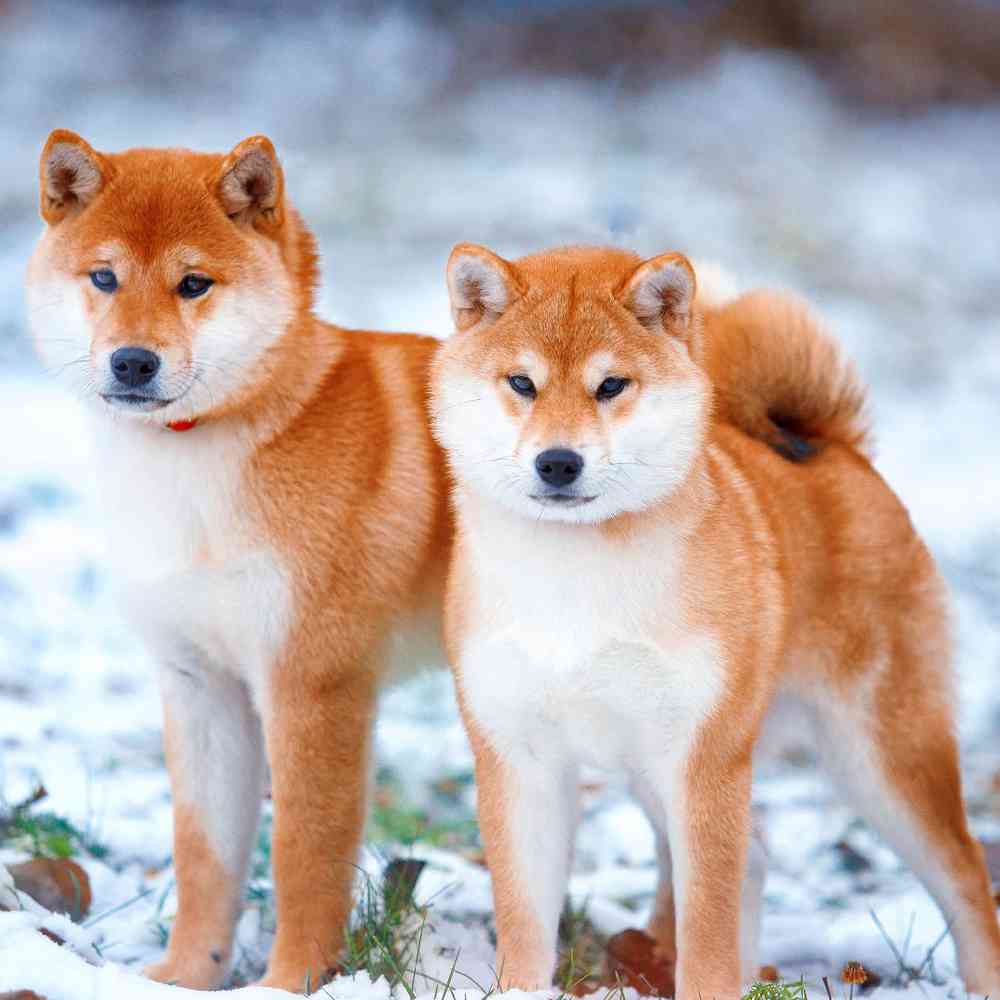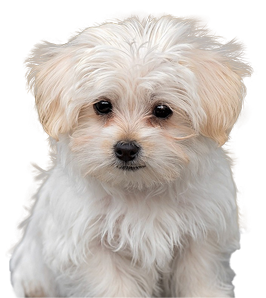
AKC Registrable
Apartment Friendly
Shiba Inu
An ancient Japanese breed, the Shiba Inu is a little but well-muscled dog once employed as a hunter. Today, the spirited, good-natured Shiba is the most popular companion dog in Japan. The adaptable Shiba is at home in town or country.
Available Pups
Puppy Knowledge
Breed Info
Clubs, Registries & Associations
American Canine Association Continental Kennel Club Universal Kennel Club International American Kennel Club United All Breed Registry America's Pet Registry, Inc. United Kennel Club (Based on breed recognition. See store for details on this particular puppy.)
Group
Non-Sporting
Heritage
The Shiba Inu is one of Japan’s most popular breeds and is the smallest of six ancient Japanese native breeds, dating back to 3000 BC. This breed was used to hunt wild game, bear, boar, rabbits and birds. Today this breed excels in hunting, tracking, guarding, and agility.
Description
Small, 13-16” at the shoulders, weighing anywhere from 15-25 pounds. The Shiba Inu is solid and muscular in a compact body with a weather-resistant double coat that comes in colors of red, black and tan, and sesame which is a red with black-tipped hair. All colors have a cream, buff or gray under coat. The outer coat is stiff and straight; the under coat is thick and soft.
Health Awareness
The Shiba Inu has a life expectancy of 12-15 years and is prone to hip dysplasia, patellar luxation, allergies, entropion, cataracts, glaucoma and PRA.
Personality
The Shiba Inu is an alert, bold, active, agile and fast-moving breed. If you open the front door, this breed will bolt and sometimes be gone for days. They are quite adept at climbing a chain link fence, too! They are spirited, brave, highly independent, and willful. Training will be both easy and challenging. They learn quickly, but will question your authority. You need to be a calm, knowledgeable, and humane owner giving consistent and committed leadership to your Shiba Inu using only motivational training methods. This breed needs a lot of early socialization, cordial to family and friends, but wary of unfamiliar people and some young children.
Additional Information
Grooming Requirements: Requires frequent and extensive brushing with bathing only when necessary to not strip the weather-resistant oils from the coat. This breed doesn't like to be held, so it's vital that you do continual body handling exercises starting when your Shiba Inu is a puppy. Coat: Short and thick Shedding: Seasonally heavy shedding Hypoallergenic: No, due to shedding Apartment Living: Good for apartment living if given sufficient exercise Lap Dog: No, this breed may be small but does not like to sit on laps or be closely snuggled. Good With Children: Good with children when well socialized at an early age, but are uncomfortable with the movements of a toddler, as well as the running and squealing of any age child. This discomfort can result in a fear bite. Good With Other Pets: Not trustworthy with small or non-canine pets. Can be dog aggressive, so be sure to socialize, socialize, socialize your Shiba Inu as a puppy.
Breed Standard
General Appearance
The Shiba is the smallest of the Japanese native breeds of dog and was originally developed for hunting by sight and scent in the dense undergrowth of Japan's mountainous areas. Alert and agile with keen senses, he is also an excellent watchdog and companion. His frame is compact with well-developed muscles. Males and females are distinctly different in appearance: males are masculine without coarseness, females are feminine without weakness of structure.
Size, Proportion, Substance
Males 14½ inches to 16½ inches at withers. Females 13½ inches to 15½ inches. The preferred size is the middle of the range for each sex. Average weight at preferred size is approximately 23 pounds for males, 17 pounds for females. Males have a height to length ration of 10 to 11, females slightly longer. Bone is moderate. Disqualification--Males over 16½ inches in dogs and under 14½ inches. Females over 15½ inches and under 13½ inches.
Head
Expression is good natured with a strong and confident gaze. Eyes are somewhat triangular in shape, deep set, and upward slanting toward the outside base of the ear. Iris is dark brown. Eye rims are black. Ears are triangular in shape, firmly pricked and small, but in proportion to head and body size. Ears are set well apart and tilt directly forward with the slant of the back of the ear following the arch of the neck. Skull size is moderate and in proportion to the body. Forehead is broad and flat with a slight furrow. Stop is moderate. Muzzle is firm, full, and round with a stronger lower jaw projecting from full cheeks. The bridge of the muzzle is straight. Muzzle tapers slightly from stop to nose tip. Muzzle length is 40% of the total head length from occiput to nose tip. It is preferred that whiskers remain intact. Lips are tight and black. Nose is black. Bite is scissors, with a full complement of strong, substantial, evenly aligned teeth. Serious Fault: Five or more missing teeth is a very serious fault and must be penalized. Disqualification--Overshot or undershot bite.
Neck, Topline, Body
Neck is thick, sturdy, and of moderate length. Topline is straight and level to the base of the tail. Body is dry and well muscled without the appearance of sluggishness or coarseness. Forechest is well developed. Chest depth measured from the withers to the lowest point of the sternum is one-half or slightly less than the total height from withers to ground. Ribs are moderately sprung. Abdomen is firm and well tucked-up. Back is firm. Loins are strong. Tail is thick and powerful and is carried over the back in a sickle or curled position. A loose single curl or sickle tail pointing vigorously toward the neck and nearly parallel to the back is preferred. A double curl or sickle tail pointing upward is acceptable. In length the tail reaches nearly to the hock joint when extended. Tail is set high.
Forequarters
Shoulder blade and upper arm are moderately anuglated and approximately equal in length. Elbows are set close to the body and turn neither in nor out. Forelegs and feet are moderately spaced, straight, and parallel. Pasterns are slightly inclined. Removal of front dewclaws is optional. Feet are catlike with well-arched toes fitting tightly togethers. Pads are thick.
Hindquarters
The angulation of the hindquarters is moderate and in balance with the angulation of the forequarters. Hind legs are strong with a wide natural stance. The hock joint is strong, turning neither in nor out. Upper thighs are long and the second thighs short but well developed. No dewclaws. Feet as in forequarters.
Coat
Double coated with the outer coat being stiff and straight and the undercoat soft and thick. Fur is short and even on face, ears, and legs. Guard hairs stand off the body are about 1½ to 2 inches in length at the withers. Tail hair is slightly longer and stands open in a brush. It is preferred that the Shiba be presented in a natural state. Trimming of the coat must be severely penalized. Serious Fault--Long or woolly coat.
Color
Coat color is as specified herein, with the three allowed colors given equal consideration. All colors are clear and intense. The undercoat is cream, buff or gray. Urajiro (cream to white ventral color) is required in the following areas on all coat colors: on the sides of the muzzle, on the cheeks, inside the ears, on the underjaw and upper throat inside of legs, on the abdomen, around the vent and the ventral side of the tail. On reds: commonly on the throat, forechest, and chest. On blacks and sesames: commonly as a triangular mark on both sides of the forechest. White spots above the eyes permitted on all colors but not required. Bright orange-red with urajiro lending a foxlike appearance to dogs of this color. Clear red preferred but a very slight dash of black tipping is permitted on the back and tail. Black with tan points and urajiro. Black hairs have a brownish cast, not blue. The undercoat is buff or gray. The borderline between black and tan areas is clearly defined. Tan points are located as follows: two oval spots over the eyes: on the sides of the muzzle between the black bridge of the muzzle and the white cheeks; on the outside of the forelegs from the carpus, or a little above, downward to the toes; on the outside of the hind legs down the front of the stifle broadening from hock joint to toes, but not completely eliminating black from rear of pasterns. Black penciling on toes permitted. Tan hairs may also be found on the inside of the ear and on the underside of the tail. Sesame (black-tipped hairs on a rich red background) with urajiro. Tipping is light and even on the body and head with no concentration of black in any area. Sesame areas appear at least one-half red. Sesame may end in a widow's peak on the forehead, leaving the bridge and sides of the muzzle red. Eye spots and lower legs are also red. Clearly delineated white markings are permitted but not required on the tip of the tail and in the form of socks on the forelegs to the elbow joint, hind legs to the knee joint. A patch of blaze is permitted on the throat, forechest, or chest in addition to urajiro. Serious fault--Cream, white pinto, or any other color or marking not specified is a very serious fault and must be penalized.
Gait
Movement is nimble, light, and elastic. At the trot, the legs angle in towards a center line while the topline remains level and firm. forward reach and rear extension are moderate and efficient. In the show ring, the Shiba is gaited on a loose lead at a brisk trot.
Temperament
Alert, Active, Attentive
Disqualifications
Males over 16½ and under 14½ inches. Females over 15½ and under 13½ inches. Overshot or undershot bite.
Overview
About
Brought to America from Japan as recently as 60 years ago, Shibas are growing in popularity in the West and are already the most popular breed in their homeland. Their white markings combined with their coloring (red, red sesame, or black and tan) and their alert expression and smooth stride makes them almost foxlike. They’re sturdy, muscular dogs with a bold, confident personality to match.
History
The first documented Shiba to enter the United States was imported by a military family in 1954. But the Shiba is an ancient breed, having been around since 300 b.c. The breed is named after its history as a hunter in the rugged mountains of Japan; “Shiba” means “brushwood” (referring either to the brush in the mountains or to the dog’s reddish color) in Japanese, and “Inu” means “dog.” By the end of World War II Shibas were nearly extinct, but they survived Japan’s wartime deprivations and are today the country’s number-one companion animal. Their popularity has been growing in the United States for the past 50 years.
Standard
The Shiba is the smallest of the Japanese native breeds of dog and was originally developed for hunting by sight and scent in the dense undergrowth of Japan’s mountainous areas. Alert and agile with keen senses, he is also an excellent watchdog and companion. His frame is compact with well-developed muscles. Males and females are distinctly different in appearance: males are masculine without coarseness, females are feminine without weakness of structure.
Nutrition
The Shiba Inu should do well on a high-quality dog food, whether commercially manufactured or home-prepared with your veterinarian’s supervision and approval. Any diet should be appropriate to the dog’s age (puppy, adult, or senior).Some Shibas are picky, and others will eat anything in sight. Some dogs are prone to getting overweight, so watch your dog’s calorie consumption and weight level; you should be able to feel the dog’s ribs and backbone, but not see them.. Treats can be an important aid in training, but giving too many can cause obesity. Learn about which human foods are safe for dogs, and which are not. Check with your vet if you have any concerns about your dog’s weight or diet. Clean, fresh water should be available at all times.
Grooming
Shibas shed — a lot. It has been said that they shed twice a year, but some owners quip that it lasts for six months at a time. Unless a Shiba is a “long coat,” the coat does not mat, so infrequent brushing doesn’t hurt the dog, but brushing or combing during periods of heavy shedding will reduce the amount of hair around the house. Blowing the dog with a strong blow-dryer or a shop vacuum in reverse is a good way to remove loose hair, dirt, and dandruff and to check for fleas. Most dogs learn to like the blower, as it feels good and doesn’t scrape the skin or pull the coat. Don’t let it get too hot, though. Shibas often object to nail trimming. Start a puppy early, but if it becomes a major struggle, let a professional do it.
Exercise
Most Shibas are fairly energetic and love to go for walks. They are not so hyper that they will climb the walls if they don’t get daily exercise, but a Shiba owner should be dedicated to exercising the dog, especially if the dog doesn’t have an adequate yard in which to exercise himself. In general, Shibas are not massively destructive if left alone once they reach maturity, but some can suffer separation anxiety and should be able to spend periods of time crated even when the owners are home and at night. Crating guarantees a home will remain intact.
Training
The one thing every Shiba owner must know is that a Shiba can never, ever be considered reliable off lead unless in a confined area. No amount of obedience training will ever change that. Letting a Shiba off lead—or any dog, for that matter—is playing Russian roulette with its life. An open door, an unlocked gate, a moment of inattentiveness, and the Shiba may be gone forever. On the positive side, a Shiba is practically born housebroken. By 4 weeks of age the puppy is trying to get as far away from his sleeping area as possible to eliminate. By 5 weeks the puppy will hold it all night and wait until taken outside to go. Controlling the bladder takes a little longer and depends a lot on immediate access to outdoors and diligence of the owner.
Health
The most common health condition in Shibas and in most breeds, as well as humans, is allergies. In dogs, allergies manifest themselves as skin irritation and itching. There is no way of testing breeding stock, but dogs with active allergies should not be bred. Unless the source of the allergen can be identified, most dogs with allergies can lead normal lives with products that treat the symptoms—again, just like humans. Allergies usually don’t manifest themselves until a dog is at least 6 months old. Responsible breeders screen their stock for health conditions such as hip dysplasia, eye disorders, and patella luxation.
Trivia
Interesting To Know
The Shiba Inu Puppy Cam spread around the internet in 2008 where you could watch six Shiba Inu puppies. Within the first week of this website, more than three million viewers had logged 1.2 million hours watching the newborn puppies. Inu is the Japanese word for "dog". Shiba means "brushwood" in Japanese, but in the Nagano dialect it means "small". This means that Shiba Inu has usually translated to "Little Brushwood Dog."



